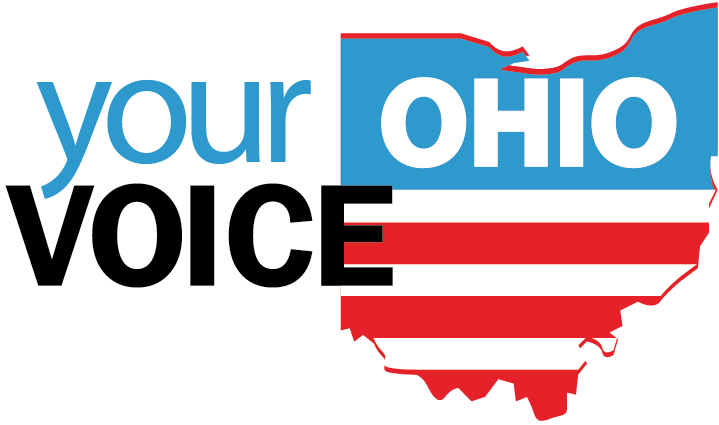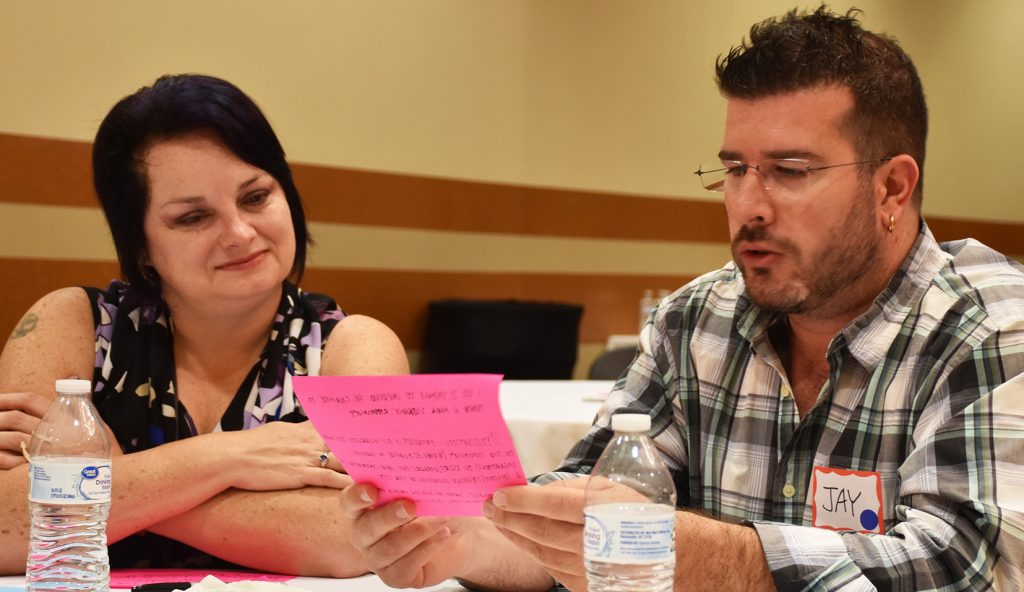Over the last week, we’ve continued our journey across the state with meetings in Warren, Akron, Stow, Cleveland, and Euclid. Now that we’ve asked Ohioans in 9 different cities about what their communities might look like if they were thriving for everyone, we’re starting to see common themes emerge. Here’s a rough look at what we’ve found.
Create a sense of community for all residents
We heard from many participants that there’s a need to build community: hope, identity, pride new connections and relationships, and respect for one another, especially those that may be currently left out of the conversation. Community problem solving needs to include everyone, especially the young people that many communities are struggling to maintain. As Warren discussion participant Shalisha May told the Youngstown Vindicator, “We must provide young people with hope. If they don’t have hope, they won’t want to stay here,”
Another realization was that problem solving looks a bit different across generations in some communities. In Warren, millennials focused on quick, actionable, community-based sustainability initiatives, while in Akron, young people discussed grassroots and neighborhood-level solutions. Meanwhile, older participants in those communities took a broader view, focusing on “bigger” challenges and solutions that required more moving parts. We saw these community discussion blend big picture thinking and ground-level action to think about the steps needed to make their communities more vibrant.
And although participants differed in their backgrounds and preferred approaches, many still had similar hopes and solutions for their community, as Kory Kuriatnyk told the Vindicator: “It was surprising how like-minded the people were.”
Provide purposeful education and meaningful jobs
Another similar theme was the future of Ohio’s workforce. Participants agreed education needs to broaden beyond the typical school subjects, such as coping and other “soft” skills – something we also heard repeatedly in our addiction meetings. These skills can help people face trauma and other difficulties in a healthy way, instead of turning to drugs, alcohol, or other toxic behaviors.
There was also a lot of discussion around preparing students for college and/or job training programs, as both are key for a successful local economy. As we’ve discussed in previous blog posts, employers across Ohio are facing a worker shortage for high-paying skilled labor jobs. Part of preparing and encouraging workers to go into these industries, we heard repeatedly, includes building the skills needed for increasingly automated workplaces.
Many of our recent blog posts and research have focused on ways to create jobs and bring businesses to communities. While these are important, they shouldn’t come at the cost of community connections and well-being, attendees across the events pointed out. They also made it clear that “more jobs” isn’t enough: people want “jobs with dignity” and to many, that means a living wage. Susan Johnston of Kettering, who participated in the Dayton conversation, told the Dayton Daily News, “There are jobs, but they are just not jobs you can raise a family on.”
Ensure equal growth
Many Ohioans listed their community’s location as a strength, often referencing the closest expressway and proximity to populations centers of the East Coast. But, how can communities market those assets to new companies, or use them as a reason to keep existing ones? Because of economic blight, considered a major issue across Ohio communities, there are now many empty buildings and recently cleared property viewed by many community members as untapped assets. How can a community set itself apart if everyone has empty real estate?
Other participants voiced concern for the location of new businesses in a community. Elise Hagan, a participant in the Springfield conversation, said while she’s glad to see Clark County attract new jobs, she’s worried some parts of Springfield won’t benefit. “All of the horn-blowing of bringing business to Springfield, we don’t see it on the south side,” she told the Springfield News-Sun. Transportation that supports workers getting to jobs was a common theme across communities.
And as we begin to see more flooding and natural disasters on our coasts, in Warren, community members offered a unique economic development approach, suggesting Ohio “tell people on the coasts we live above the water line,” insulated from devastating storms. As a midwestern state with mild-ish weather, Ohioans wanted that to be known for attracting people to their community.
Focus on personal commitments
We heard the sentiment that local government isn’t accomplishing what people need in order for their community to thrive. One solution was a renewed focus on personal responsibility – advocating, attending local meetings, voicing concerns to representatives, and taking action on the individual and neighborhood levels.
At the end of our most recent conversations, we asked participants to brainstorm personal actions they could take to address community vibrancy concerns. Many people wrote down they would shop locally, attend more public meetings, get involved with the local schools, and share positive news about the community.
What are some of the biggest challenges in your community, preventing it from thriving and for everyone? What personal actions could you take to address these? Let us know below.





